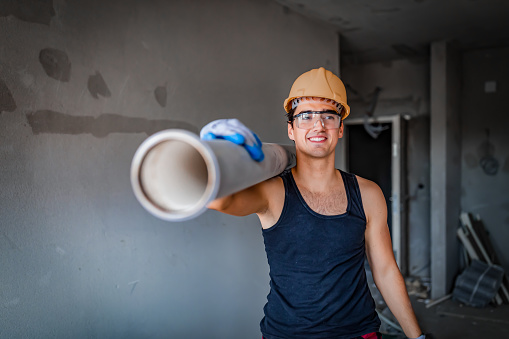Most people take their toilets for granted. You use them daily, pull or push the flush, and the waste disappears. It’s as simple as that! When you have an issue to Plumb A Toilet, you call a reputable plumber Sydney and get the problem resolved.
However, there is more to it than simply putting the toilet in situ. Toilets have come a long way since the first flush toilet was invented in 1596. But, the need for the waste to be disposed of efficiently hasn’t.
Elements Of the Modern Toilet
The toilet consists of several parts. The main section is generally referred to as the bowl. This is where you sit. It has an ‘S’ bend built into it. The S bend traps water and makes the toilet experience nicer. But, it also prevents gases from entering your home. That’s not a smell you want to live with.
Most modern toilets are close-coupled, meaning the cistern sits on top of the bowl. This is the section that contains the water and a valve assembly with float.
When you pull the lever, the water is dumped out of the cistern, into the toilet. The float drops, opening the water valve which allows water to refill the cistern as the flapper valve closes. All you have o do when installing this part of the toilet is bolt the cistern to the bowl using the kit provided, and connect a water supply.
The Waste And Vent- Plumb A Toilet
The waste pipe is usually three inches although it can be four inches, three is fine. This connects to the back or the base of the toilet. In most cases, the wastewater will drop vertically before entering a horizontal run. It’s important to note that all horizontal runs must be set at a slight angle. This needs to be in keeping with local regulations.
Making the angle too steep allows the water to drain faster than the solids, which will create a clog.
In essence, the waste from your toilet simply needs to connect to the main sewer or a septic tank via the shortest possible route while paying attention to drop ratios
But, there is a complication. If you dump several litres of water into the waste system it will push the air in front of it, creating a vacuum and sucking all the water out of your toilet. The system needs to be properly vented to prevent issues.
To do this a three-inch piece of pipe must go vertically up and it must be near the first toilet or other appliance on the run.
The pipe usually needs to go up and above your roofline. You’ll need to verify this with your local regulations to ensure the height above the roofline is accurate.
The vent pipe connects to the main sewer with a Y connector, this allows air to be pushed up the pipe, or pulled down it, without any risk of the wastewater and solids going the same way and creating a clog.
Once this is fitted your toilet will work efficiently and properly.









